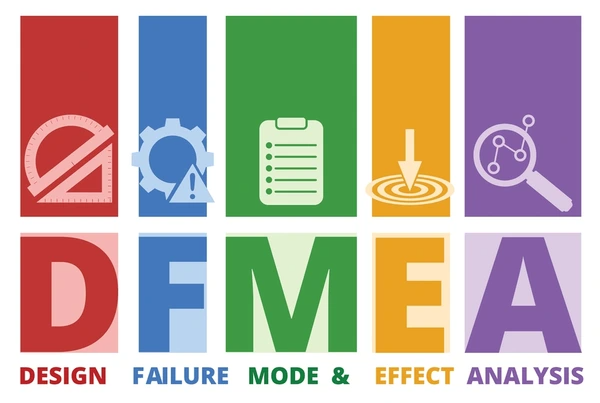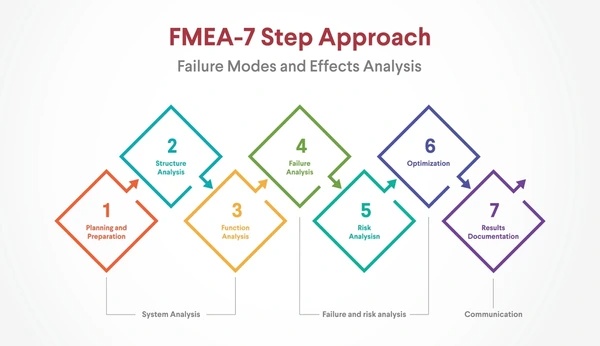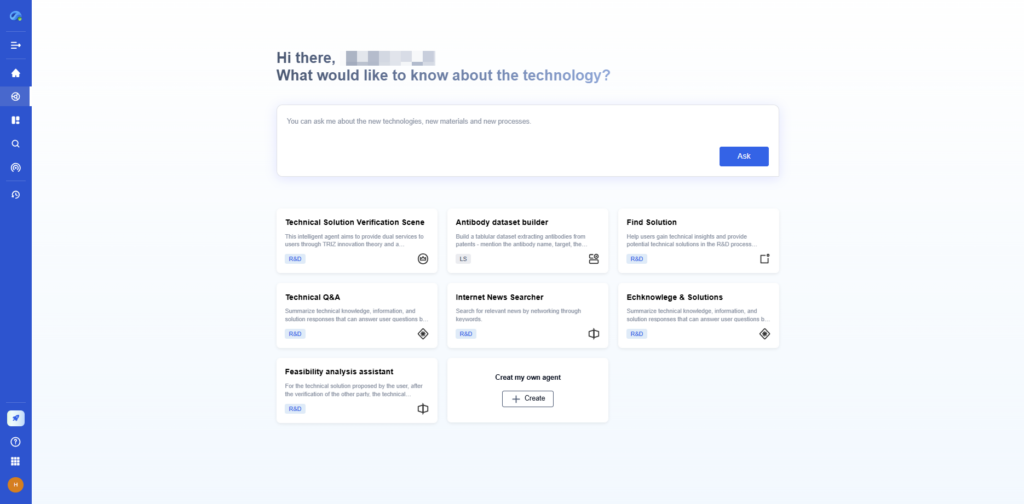
Design Failure Mode and Effects Analysis (DFMEA) is a crucial part of the product development process. It helps engineering teams anticipate design failures before they happen, prioritize risk, and implement corrective actions during early-stage design. In today’s innovation-driven environment, integrating AI-powered tools like PatSnap’s Eureka Feasibility Analysis AI Agent significantly enhances this process, enabling faster, more data-informed decisions. This article will explore how DFMEA works, its key benefits and limitations, and how Eureka helps improve the quality and speed of feasibility analysis.
Eureka’s Feasibility Analysis AI Agent helps engineers detect design flaws, model risks, and uncover actionable insights. Whether you’re optimizing a medical device or testing a dynamic silencer, Eureka speeds up validation and drives smarter innovation.
What Is DFMEA and Why It Matters in Product Development
DFMEA is a structured method used to analyze potential failure modes within a design, understand their root causes and consequences, and determine the likelihood of detection. By scoring each failure mode based on severity (S), occurrence (O), and detection (D), engineers can calculate a Risk Priority Number (RPN) to assess which issues require immediate attention. This risk-based approach ensures that safety-critical and high-impact problems are addressed early, before production or customer use.
The DFMEA process is typically implemented in industries where reliability and performance are non-negotiable. Automotive systems, aerospace structures, consumer electronics, and medical devices all rely on DFMEA to avoid costly recalls and ensure safety compliance. Early identification of failure modes helps prevent late-stage redesigns, production delays, and post-market defects that can hurt both customer trust and brand reputation.

Core Steps in the DFMEA Process
1. Define the Scope
Start by setting the boundaries and objectives of the analysis. Identify key components, functions, and the design’s intended use. This step ensures that the DFMEA remains focused and covers all critical areas.
2. Identify Failure Modes and Effects
Gather a cross-functional team to brainstorm all possible failure modes. For each component or function, list out potential ways the design could fail. Be thorough to ensure no failure mode is overlooked.
3. Analyze Causes and Mechanisms
For every failure mode, determine the root cause. Investigate how and why each failure could happen. Understanding these mechanisms helps uncover systemic design weaknesses.
4. Assess and Prioritize Risks
Assign severity, occurrence, and detection ratings to each failure mode. Calculate the Risk Priority Number (RPN) to rank issues. Focus on high-RPN items that pose the greatest threat to performance or safety.
5. Develop Mitigation Plans
Create action plans to reduce or eliminate top-priority risks. Include both preventive and detective controls to strengthen design reliability and safety.
6. Document and Review Findings
Record all results, including failure modes, risk scores, and action items. Review this documentation with stakeholders. Use the DFMEA record as a reference for design updates and quality planning.
7. Implement and Monitor Improvements
Put action plans into place and monitor the results. Track whether design changes resolve identified issues. Continuously update the DFMEA as new risks emerge or the design evolves.

Common Use Cases of DFMEA Across Industries
DFMEA is widely used in sectors where product performance, durability, and user safety are top priorities. In the automotive industry, DFMEA is applied to analyze engine components, safety systems, and power electronics. In the medical field, it ensures that devices such as infusion pumps and surgical tools meet strict reliability standards. Consumer electronics manufacturers use DFMEA to predict battery failures, thermal issues, or circuit malfunctions. Industrial machinery developers apply it to optimize designs for harsh environments and prevent premature wear or failure in mechanical parts.
Regardless of the application, DFMEA offers teams a repeatable, structured way to document and reduce risk—making it a foundational tool for quality management systems like ISO 9001 and IATF 16949.
Benefits and Challenges of Implementing DFMEA
The primary benefit of DFMEA is its ability to proactively identify design weaknesses before they result in real-world failures. This leads to improved product reliability, fewer warranty claims, better customer satisfaction, and lower overall lifecycle costs. It also supports regulatory compliance and builds internal knowledge by documenting failure data over time.
However, DFMEA has limitations. It can be time-consuming, especially for complex systems with hundreds of components. Scoring often relies on subjective judgment, which can lead to inconsistencies across teams. Traditional DFMEA may also struggle to capture unknown or rare failure modes, limiting its ability to predict novel design issues. These challenges are especially significant when development cycles are short, and engineering teams need rapid feedback.
How PatSnap Eureka Feasibility Analysis AI Agent Enhances DFMEA

PatSnap’s Eureka Feasibility AI Agent elevates the traditional DFMEA process by automating key analysis steps and providing deep technical validation. Here’s how it helps:
1. Automated Failure Mode Discovery
Eureka uses historical design data, patents, and failure case databases to auto-suggest likely failure modes that teams might overlook.
2. Real-Time Risk Prioritization
Instead of manually scoring severity, occurrence, and detection, Eureka leverages AI-driven probabilistic modeling to estimate risk scores more accurately and consistently.
3. Material and Structural Validation
The Feasibility AI Agent evaluates materials and structural decisions in the design to detect technical weaknesses, reducing risk during early development.
4. Predictive Defect Analysis
Eureka predicts potential design flaws based on similar past failures and suggests mitigation strategies using global R&D insights.
5. Accelerated Reporting
With automated risk profiling and technical summaries, Eureka streamlines the creation of DFMEA reports, saving engineering teams time while improving precision.
Example Use Case: When evaluating a dynamic silencer system with sensor-regulated chambers, Eureka can predict material fatigue risk, actuator failure probabilities, and geometry-based resonance mismatches—all vital inputs for a high-quality DFMEA.
Streamlining Technical Reporting and Risk Documentation
Eureka also improves the speed and quality of DFMEA documentation. Instead of manually compiling and formatting reports, engineers can generate structured feasibility reports with summarized risks, mitigation recommendations, and updated RPN scores in a matter of minutes. This accelerates project timelines and reduces the burden on engineering and quality assurance teams. For organizations that need to meet strict documentation standards or frequently submit design updates to regulatory agencies, Eureka’s automated reporting can provide a significant advantage.
Best Practices for Using DFMEA with Advanced Tools
To get the most out of DFMEA and tools like Eureka, it’s essential to begin the analysis early in the product development lifecycle. Teams should ensure that functional requirements are well defined, involve cross-functional expertise, and validate assumptions through simulation or testing. Regular updates to the DFMEA as the design evolves are also critical. Integrating Eureka into this process allows for continuous design validation, real-time risk re-evaluation, and actionable insights that keep the design aligned with safety, quality, and performance targets.
Tips for Better DFMEA Execution
- Start early in the design cycle.
- Use cross-functional teams with design, manufacturing, and quality expertise.
- Validate assumptions with real data or simulations.
- Revisit DFMEA regularly as the design evolves.
- Integrate tools like Eureka to make your DFMEA smarter and faster.
Conclusion: A Smarter Way to Prevent Design Failures
DFMEA remains a cornerstone of engineering design validation, providing a structured way to analyze and mitigate design risks. Yet, as products become more complex and timelines shrink, traditional DFMEA processes must evolve. By integrating PatSnap’s Eureka Feasibility Analysis AI Agent, organizations can supercharge their risk assessment workflows—leveraging intelligent automation, predictive modeling, and global technical data to design safer, more reliable products.
Start Strengthening Your Designs Today
Eureka’s Feasibility Analysis AI Agent empowers engineers with automated defect detection, advanced risk modeling, and actionable design insights. Whether you’re refining a medical device or evaluating a dynamic silencer system, Eureka helps you validate faster and innovate smarter.
To get detailed scientific explanations of DFMEA, try Patsnap Eureka.


